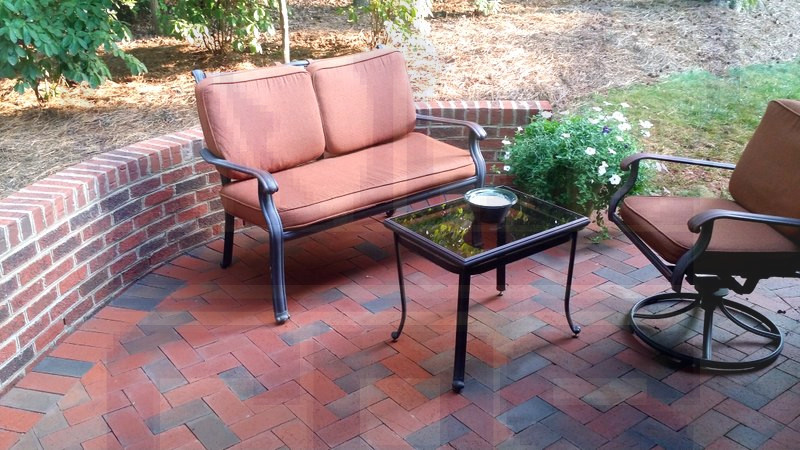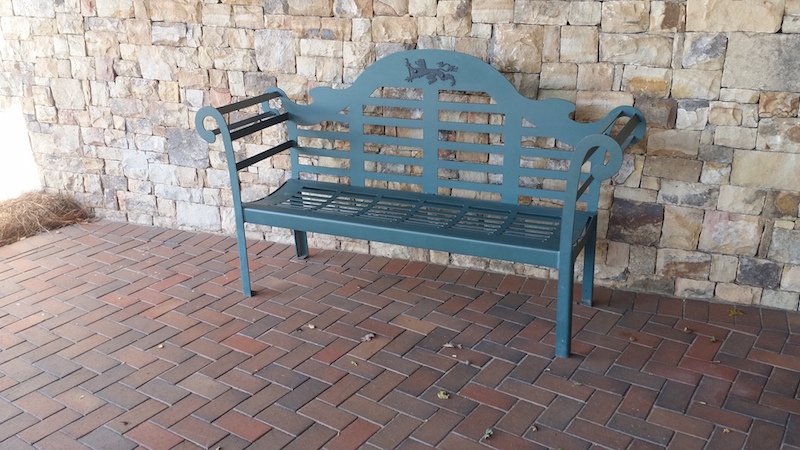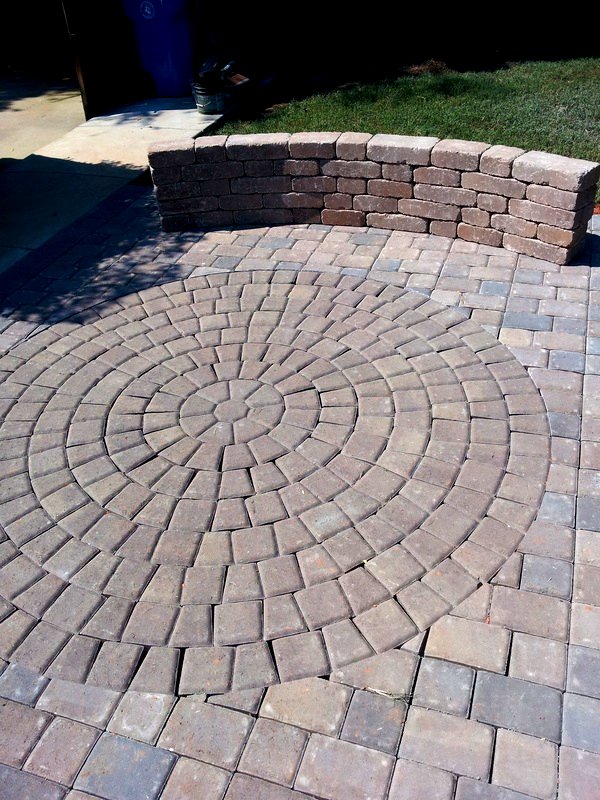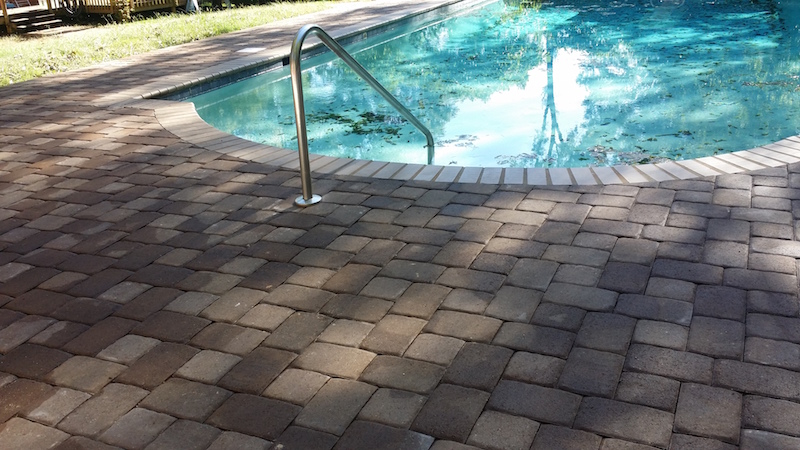Building a paver patio is an ideal way to add interest and utility to your outdoor living space. With varying materials such as brick and concrete, it is sometimes hard to decide which is the best fit for you. The choice largely depends on your personal taste. However, here are some tips to help you make your decision:
Brick Pavers
Brick pavers are classic. They’ve got lots of character, and you can explore your creative chops by setting them in intricate patterns. Thinner than typical “builder bricks” used on home siding, they’re made to hold up under heavy foot traffic.
- Color: Bricks are naturally colored by mixing in various types of clays, so they
 retain color better than concrete.
retain color better than concrete. - Last Longer/Durability: Bricks may chip or crack over time, but they last for generations. Bricks tend to break in response to stress (such as ice, traffic or moisture) while the surface on concrete pavers can erode and fade over time.
- Less Maintenance: bricks resist staining and require less maintenance and cleaning than concrete pavers.
- Timeless Appearance: Bricks have a distinct edge in looks and style. An aged, worn brick walkway retains its charm and adds architectural interest.
- Eco-Friendly: In addition to being made from all natural materials, bricks are
 frequently salvaged, cleaned, and reused, making them a more sustainable choice.
frequently salvaged, cleaned, and reused, making them a more sustainable choice. - Higher Cost: Brick can be up to 15% to 20% more expensive than concrete.
- Size Variance: Due to the variables in making, bricks vary slightly in their dimensions, making them a little trickier to install. and cost more in terms of labor to install.
Concrete Pavers
Concrete pavers are made from cement and aggregate poured into forms, compressed, and  air cured. Concrete can be formed into all sorts of shapes and sizes and colors specifically tinted to meet your space.
air cured. Concrete can be formed into all sorts of shapes and sizes and colors specifically tinted to meet your space.
- Cheaper: Concrete pavers are less expensive than brick, due to the lower raw materials costs.
- Variety of Choice: Concrete offers far more design and color options than brick. If you can imagine it, you can make it happen with concrete pavers.
- Innovation: New and better concrete pavers are being designed all the time, so you might even find choices that correct the known downsides of concrete.
- Easier to Install: Concrete pavers are precisely uniform and easier to cut, so they’re a popular choice for DIY projects.
- Fading Color: Concrete pavers can fade over time since they’re dyed with color pigments rather than natural clay. Not ideal for very sunny locations.
- Additional Maintenance: Sealants can help prolong the color in concrete pavers but add to maintenance.
- Shorter Life Span: While initially holding up better to traffic than brick, concrete pavers have a shorter lifespan, a few decades.
Click on a button below to see our Paver Patio portfolio
[button text=”Concrete Paver Patio Design Gallery” link=”/portfolio-view/concrete-paver-design-gallery/” style=”default” size=”normal” target=”_self” display=”inline” icon=”no”]
[button text=”Brick Paver Patio Design Gallery” link=”/portfolio-view/brick-design-gallery/” style=”default” size=”normal” target=”_self” display=”inline” icon=”no”]

